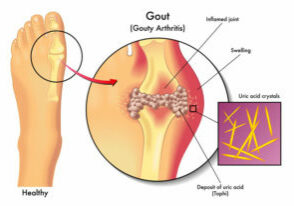
Hormones and Diseases of the Pituitary Gland

Hormones and Diseases of the Pituitary Gland
Introduction
The pituitary gland, often called the "master gland" of the endocrine system, is pivotal in regulating numerous physiological processes within the human body. This small, pea-sized gland, situated at the base of the brain, consists of several distinct parts, each with its unique functions and regulatory mechanisms. In this comprehensive exploration, we will delve into the various components of the pituitary gland, highlighting their anatomy, functions, and clinical significance.
I. Anterior Pituitary Gland (Adenohypophysis)
The anterior pituitary gland, or adenohypophysis, comprises the bulk of the pituitary and is further divided into three key regions:
A. Pars Distalis
The Pars Distalis, also known as the anterior lobe, constitutes the anterior pituitary's most considerable portion. It synthesizes and secretes six significant hormones:
Growth Hormone (GH): GH regulates growth, cell repair, and metabolism. Excessive secretion in childhood can lead to gigantism, while its deficiency can result in dwarfism.
Prolactin (PRL): Prolactin stimulates milk production in females. Elevated levels may cause hyperprolactinemia, leading to fertility issues and breast milk production in non-pregnant women and men.
Thyroid-Stimulating Hormone (TSH): TSH stimulates the thyroid gland to produce thyroid hormones. Aberrations in TSH levels can lead to thyroid disorders like hypothyroidism or hyperthyroidism.
Adrenocorticotropic Hormone (ACTH): ACTH stimulates the adrenal glands to produce cortisol, a stress hormone. Overproduction can result in Cushing's syndrome, while underproduction leads to adrenal insufficiency.
Follicle-Stimulating Hormone (FSH) and 6. Luteinizing Hormone (LH): FSH and LH regulate the reproductive system. They control the development of eggs and sperm and govern the menstrual cycle. Imbalances can lead to infertility and hormonal disorders.
B. Pars Intermedia
The Pars Intermedia is a smaller section of the anterior pituitary responsible for producing a minor hormone, Melanocyte-Stimulating Hormone (MSH). MSH influences skin pigmentation and appetite regulation. Dysregulation can contribute to skin disorders and obesity.
C. Pars Tuberalis
The Pars Tuberalis, the anterior-most part of the pituitary, envelops the pituitary stalk and contributes to circadian rhythms by responding to external environmental cues. It plays a role in seasonal reproductive patterns.
II. Posterior Pituitary Gland (Neurohypophysis)
The posterior pituitary, or neurohypophysis, is a neuroendocrine structure that stores and releases hormones produced by the hypothalamus:
A. Oxytocin
Oxytocin is the "love hormone" or "bonding hormone." It regulates uterine contractions during childbirth and milk ejection during breastfeeding. Oxytocin also plays a role in social bonding and emotional attachment.
B. Vasopressin (Antidiuretic Hormone - ADH)
Vasopressin, or ADH, regulates water balance by controlling kidney reabsorption. It is crucial in maintaining blood pressure and preventing dehydration.
III. Intermediate Lobe
The intermediate lobe, often considered a part of the anterior pituitary, secretes melanocyte-stimulating hormones (MSH). MSH influences skin pigmentation by stimulating melanin production in melanocytes.
IV. Pituitary Stalk (Infundibulum)
The pituitary stalk, also known as the infundibulum, connects the hypothalamus and the pituitary gland. It carries hormones the hypothalamus produces to the posterior pituitary for storage and release.
V. Blood Supply and Portal System
The pituitary gland receives its blood supply through a unique portal system known as the hypothalamic-pituitary portal system. This system ensures that hormones produced by the hypothalamus reach the anterior pituitary without being significantly diluted in the systemic circulation, allowing precise control of hormone secretion.
Conclusion
The pituitary gland's intricate structure and multifaceted functions make it a critical regulator of numerous physiological processes in the body. Understanding the pituitary gland's various parts and functions is essential for diagnosing and treating a wide range of endocrine disorders. The delicate balance of hormones produced and regulated by the pituitary is a testament to the complexity of human physiology.
Footnotes:
Gigantism: A condition characterized by excessive growth during childhood due to an overproduction of growth hormone.
Dwarfism: A condition characterized by stunted growth and short stature due to a deficiency in growth hormone.
Hyperprolactinemia: Elevated levels of prolactin in the blood can lead to various symptoms, including infertility and breast milk production in non-pregnant individuals.
Cushing's syndrome: A collection of symptoms caused by prolonged exposure to high levels of cortisol, often due to excessive production of adrenocorticotropic hormone (ACTH).
Adrenal insufficiency: A condition in which the adrenal glands do not produce enough cortisol and aldosterone, usually due to insufficient stimulation by ACTH.
Hypothyroidism is characterized by an underactive thyroid gland, resulting in a deficiency of thyroid hormones and a slowdown of metabolic processes.
Hyperthyroidism: A condition characterized by an overactive thyroid gland, leading to excessive production of thyroid hormones and an accelerated metabolism.
Infertility: Inability to conceive after a year of regular, unprotected intercourse.
Hormonal disorders: Conditions resulting from imbalances or dysregulation of hormones in the body, leading to various health problems.
Seasonal reproductive patterns: Changes in reproductive behavior and physiology that occur in response to seasonal variations in day length and environmental factors.
Neuroendocrine: This refers to the interaction between the body's nervous system and the endocrine (hormone-producing) system.
Melanin: A pigment responsible for skin color, hair, and eyes.
Dehydration: A condition characterized by insufficient fluid intake or excessive fluid loss, leading to an imbalance in body water levels.
Hypothalamic-pituitary portal system: A specialized blood vessel network that connects the hypothalamus to the anterior pituitary, allowing for the direct transport of releasing hormones.









